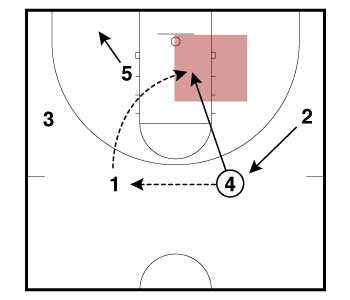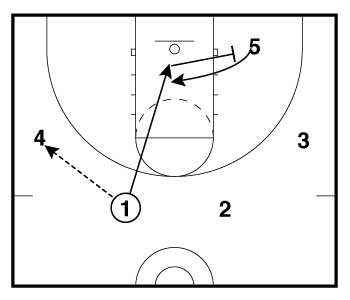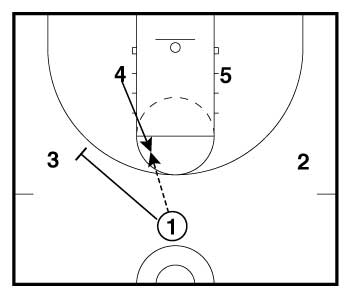One of the defenses that Read & React coaches sometimes struggle against is a sagging man to man. And, it makes sense. If you don't have shooters, a defense can interfere with all the cutting and penetration of the Read & React by playing off and protecting the paint.
But, as I'm sure you've already guessed, there are solutions. These came from
coaches like you in the forum and have been used in real games in real situations. Thanks to Mat11, Rob K, rpt, Rick, and rgriffin921 for the ideas.
Pin & Skip: A Pin & Skip sends a message to the defense, "if you want to sag, then you will have to navigate a screening situation. Help and sag if you want, but your defensive life will be much more difficult".
But, you don't have to shoot on the skip pass. You don't even have to score on that action. It's designed to move the defense out of their comfortable little box and hopefully open up some seams that can be exploited by other actions.
A skip pass recipient can drive immediately against the close out, feed the post and make one of four post cuts, make a perimeter pass and cut, Power Dribble, Reverse Dribble, or Skip the pass back across if another Pin Screen has been set.
Try the Pin & Skip, force the defense to navigate screens, and look to score with the next action.
Of course, if you have the shooters, knocking down the 3 is the simplest option.



